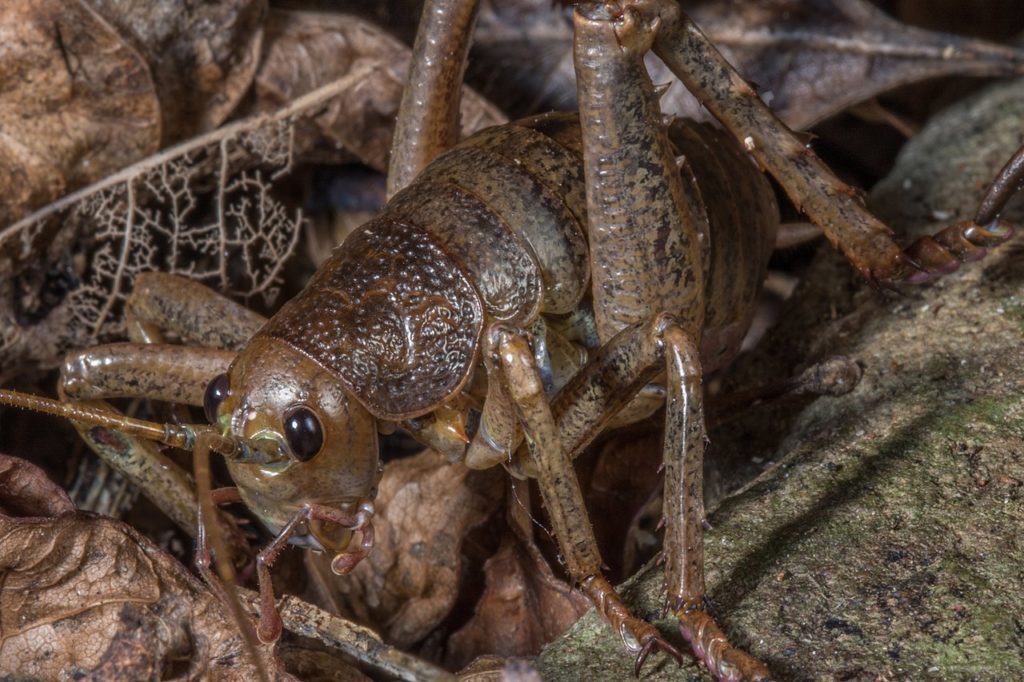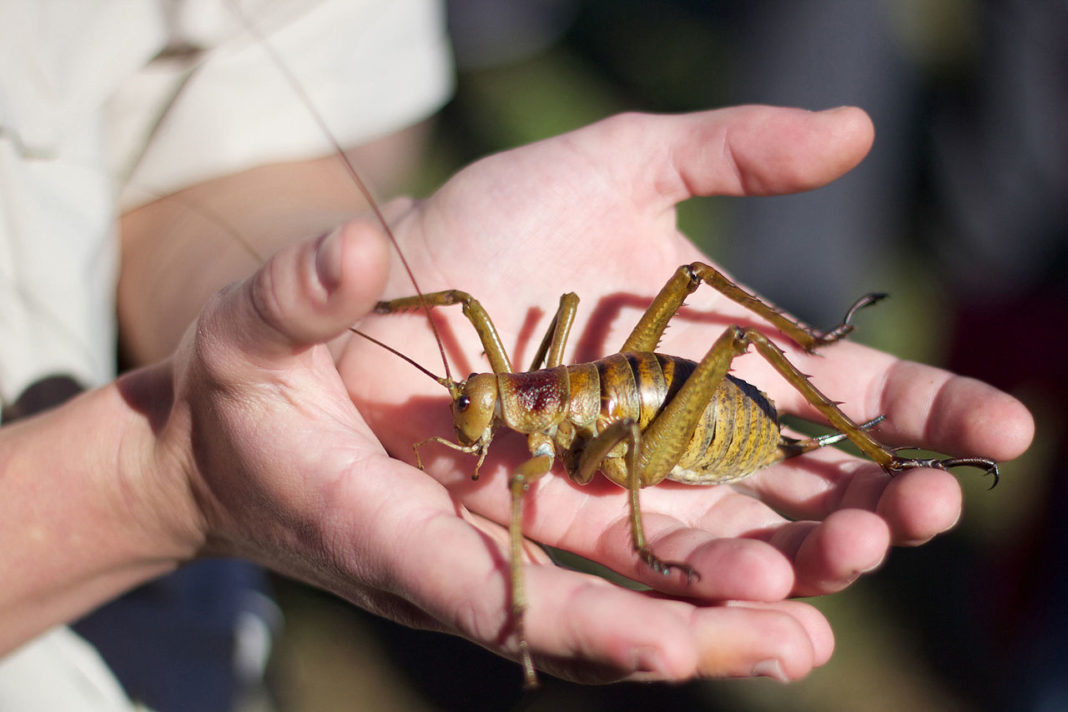Deinacrida heteracantha, also known as the Little Barrier giant wētā or wētāpunga, is a wētā in the order Orthoptera and family Anostostomatidae. It is endemic to New Zealand, where it survived only on Little Barrier Island, although it has been translocated to some other predator-free island conservation areas. This very large flightless wētā mainly feeds at night but is also active during the day, when it can be found above ground in vegetation. It has been classified as vulnerable by the IUCN due to ongoing population declines and restricted distribution.

D.heteracantha can weigh up to 70 g, but on average weighs between 9–35 g. The average body length is around 75 mm. It is a sexually dimorphic species, with the females being much larger than the males. This large wētā has a broad body and a round head, along with short mandibles. Compared to other cricket species wētā have relatively short antennae, but can deliver a strong kick with their hind legs. They are generally wingless. The species is mainly herbivorous and feeds on forest foliage.

For all its size and fearsome appearance, however, the wētāpunga is quite docile. It moves slowly and feeds mainly on the leaves of a wide variety of native trees. It can’t fly or jump to escape an attack or kick or bite to deter predators. For defense, it has only its tough exoskeleton and the spines on its legs, and its elusive behavior. When disturbed, it can also make a good stridulating hiss, using its legs and abdomen. In the past, these features were sufficient for wētāpunga to survive and thrive, despite being prey to animals such as moreporks, harriers, kingfishers, and tuatara.
According to the Internet















